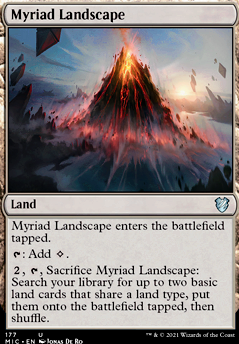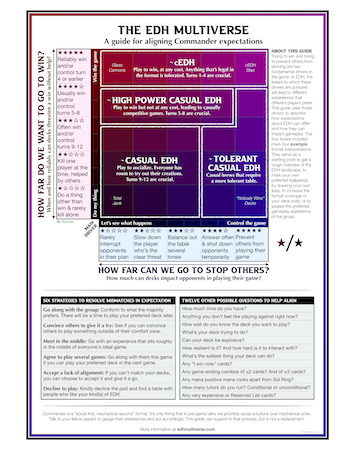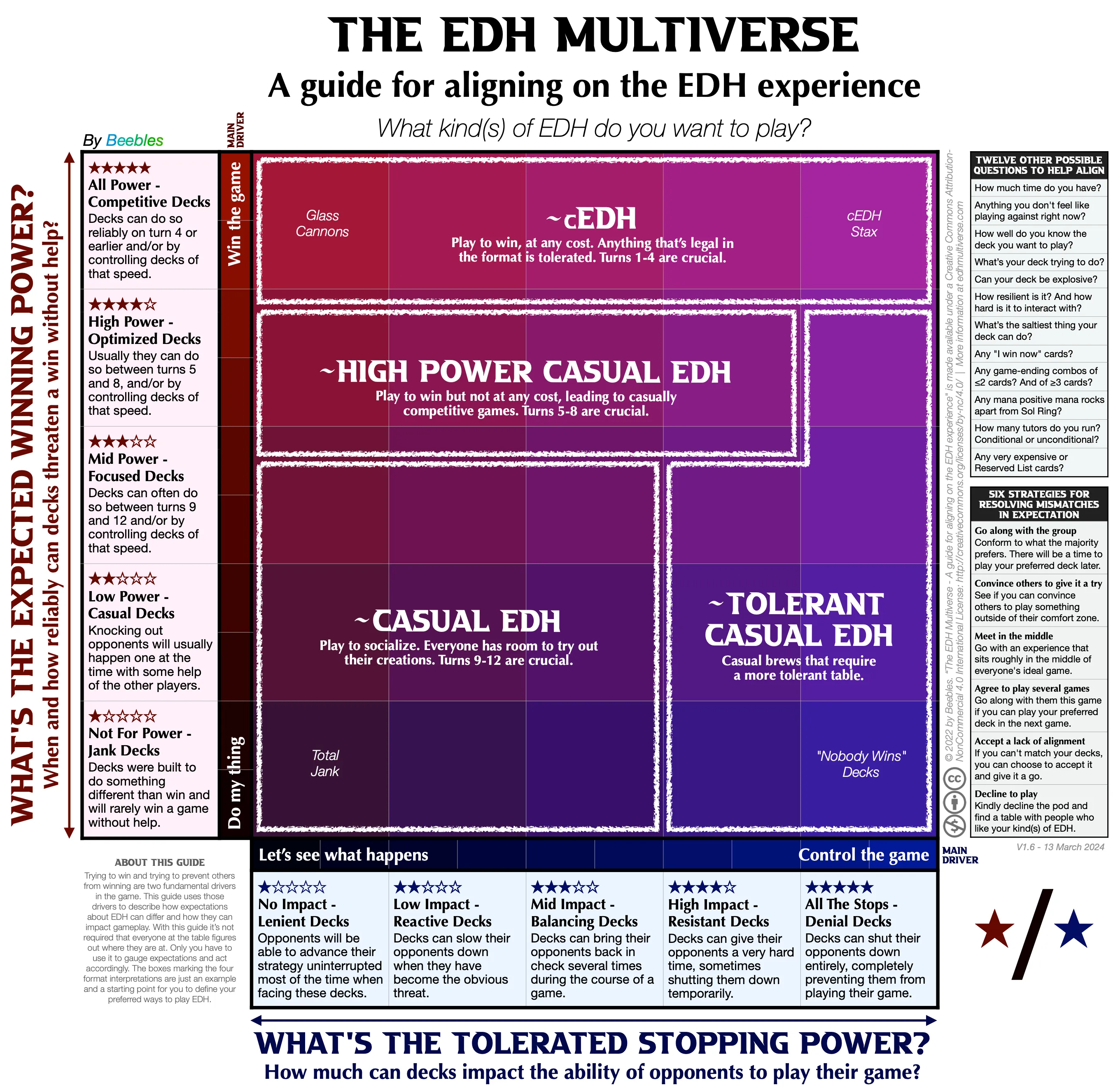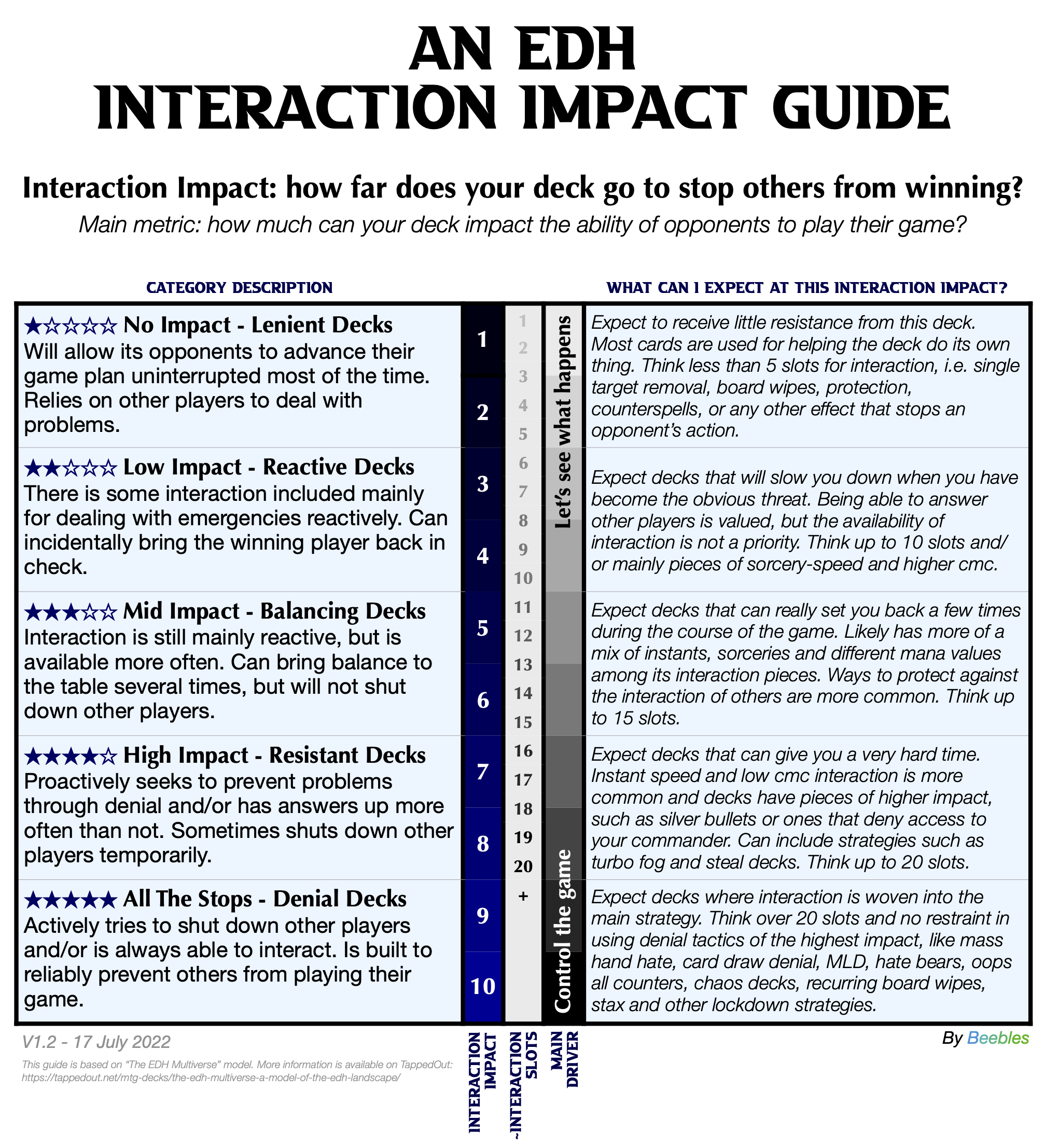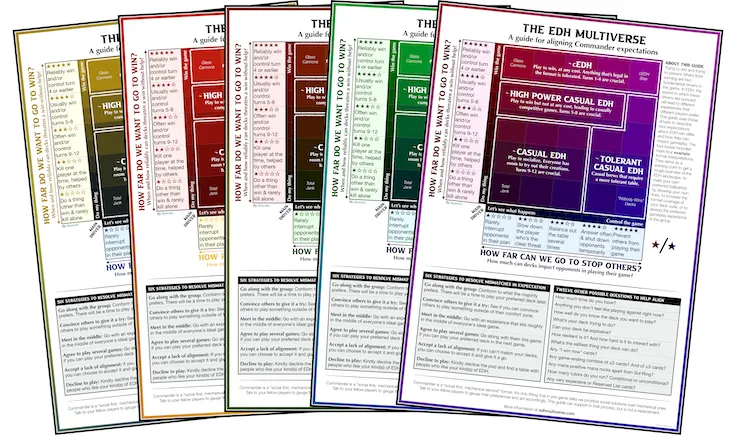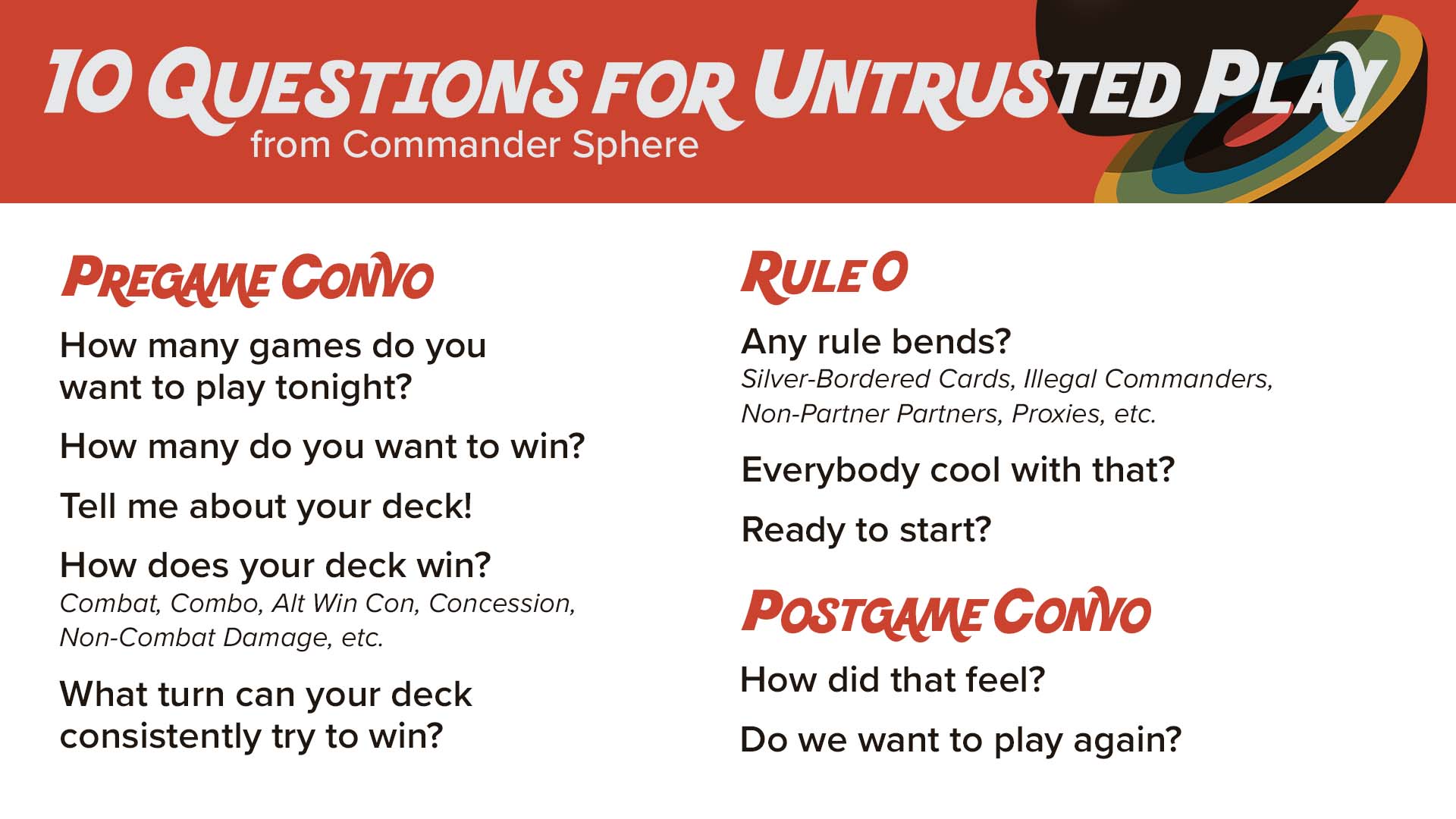The model was born from the realization that most EDH guides leave out a dimension of the format that I find vital for understanding it: how far players want to go in stopping each other from winning. Playgroups that avoid cards like Armageddon, Mindslicer, Vorinclex, Voice of Hunger, Drannith Magistrate or Rest in Peace don’t do so because they are overpowered for their meta. They do so because the effect that these specific interaction pieces have on the experience doesn’t match with the type of gameplay that the group is looking for. It's for social reasons, not power reasons. I think interaction impact can help to better understand the format, as well as what makes Casual EDH and cEDH different.
Restraint - The casual challenge
The history of the EDH format is an interesting story. Although now enjoyed at all levels of competitiveness, EDH was created with the intent to be played casually. As an alternative to competitive formats. Instead of trying to build the most powerful decks possible, in EDH you could build and play decks that were toned down in power to give room for a larger card pool, more variance and an alternative experience.
This casual way to play implies applying restraint in the deck building process. Restraint in how good your deck is at winning: after all, if you can win way faster than the rest of the table, they might get the experience that they did not really have a chance to participate. The classic pubstomper scenario. The same is true however for your deck's ability to stop others from winning: after all, if you are way better at shutting down your opponents than them, they might also get the experience that they did not really have a chance to participate. Neither tend to be a recipe for an entertaining game. At least not for the majority of the table. Ideally, both aspects of the deck you choose to play are appropriate given the expectations of all the players at the table.
Most other guides out there focus on mapping "Power level" alone. With this guide I propose that understanding the expected range of "Interaction Impact" is equally important for knowing what your playgroup is OK with, especially in a casual setting. This is because, at least in my experience, showing restraint on both of these areas defines what it means to play casual EDH:
To build your decks so you can play your game and try to win in an expressive way,
but never at the cost of the other players feeling they've lost their ability to do the same.
Now where those boundaries lie exactly will differ from playgroup to playgroup, but that balancing act of finding a shared ballbark with the people you are playing with is what casual EDH means to me. It's about respecting the time of the other players at the table by refraining from building decks that will make you have fun at the expense of the fun of others. It's about the intent to ensure everyone will enjoy the game you’re about to play.
That is where the casual challenge lies: if you’re not going to play at the maximum power of the format, then how much restraint are you going to apply to make it fun for everyone? How far can we go until players feel that things are going too fast? And how far can we go until players feel they have lost too much agency over their game actions? This is something you'll have to talk about with the people you are playing with before you start, which is something not seen in any other format. In that sense, EDH is more akin to a game framework than a conventional format: you have to interpret it first before playing. Finding the shared ballpark takes some effort, and because of the many possible outcomes it's challenging at times to get on the same page or to not run into some feelbad situations every now and then. In my opinion, it makes Casual EDH best suited for playing with a fixed playgroup, because it gives you a lot more time to know where everyone's at and to craft one or more casual EDH interpretations that everyone can get behind.
When playing casually, the concept of Interaction Impact can help players express what level of restraint they prefer in the trying-to-stop-each-other-from-winning department. Just like the concept of Power Levels can help them express what level of restraint they prefer in the trying-to-win department.
Unambiguity - The competitive advantage
This balancing act is less of a challenge when playing EDH competitively. In cEDH, at least in my understanding, the expectations tend to be very clear and consistent:
Play to win, without compromise.
Anything that is legal in the format is tolerated.
That is the opposite of applying restraint. As a result, there is little room for ambiguity in that EDH interpretation, which for some is one of the main draws of cEDH. That is not to say there is no room for expression in cEDH, or that cEDH players don't respect the time of their fellow players. Although cEDH players are more competitive in mindset, cEDH is also about a social experience and enjoying a game of multiplayer Magic together. It's still EDH. It's just a different ballpark to play in that provides a different experience. And because the cEDH ballpark is free of restraint, aligning on what that experience should look like takes less effort compared to casual EDH, as it's relatively hard to have different expectations for the competitive interpretation of the format. This absence of restraint in cEDH also means the concept of Interaction Impact will likely be less relevant to you the more competitively you prefer to play.
Which EDH interpretation is correct?
So on the one end of the format we have the casual mindset, seeking a specific experience by applying restraint when building a deck to both its power to win and its power to stop others from winning. On the other end we have the competitive mindset, seeking a specific experience by not applying such restraint in their deckbuilding, but instead exploring how far the format can be pushed competitively. Which one is correct?
In trying to answer this question we could look at how the format was intended to be played. Its creators made EDH as an alternative to competitive play. That is the game they designed and it’s that experience that the Commander Rules Committee has committed most of their resources towards. They know the format is easily broken and for a long time advised players not to in their Commander Philosophy Document. They aren’t committed to balancing the format, because that is not relevant for the game experience they set out to develop and maintain. And even if they wanted to, it would probably not be possible anyway.
This may lead people to believe that Casual EDH is the only one correct way to play the format. Or that the casual way is more correct than cEDH because it’s closer to the way it was originally intended to be played. Personally I don’t think that's how this stuff works. For example: the electric guitar wasn’t intended to be played in the ways that Jimi Hendrix ended up using it, but those ways surely proved to be entertaining for a lot of people.
Perhaps a more fitting comparison is Mario Kart 64. That video game, like EDH, was designed to be played as a local multiplayer game. A party racing game you enjoy with 3 of your friends casually with some beers and banther. And the majority of players probably play it in that way. However, because it's so easily broken it accidentally also ended up becoming one of the most entertaining speedrun games ever made. Its speedrun community still thrives, despite the game never getting a speedrun game mode, in-game leaderboards, or bug fixes from the game developer.
If EDH is the Mario Kart of Magic, then the cEDH player base is its speedrun community. The game wasn't originally designed to be played like that and its developers haven't committed many resources to support that way to play, but that doesn’t make it wrong to do so.
The game of Commander is a form of entertainment. You are playing it correctly when you and the people you are playing it with are having a good time.
